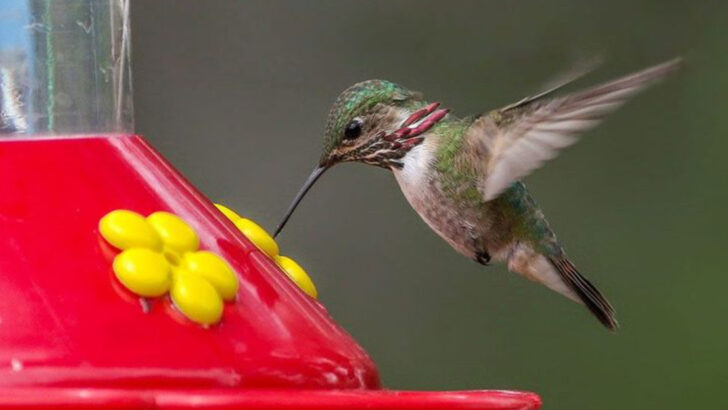Ants don’t fly—but they’ll march straight up to your hummingbird feeder like they own the place.
What’s meant for delicate, darting birds turns into an all-you-can-eat buffet for these sugar-obsessed invaders. And once one ant finds the nectar? You’ve got an army on your hands.
It’s war.
Tiny, six-legged war.
But don’t worry—you’ve got plenty of tricks up your sleeve. From clever placements to natural deterrents, keeping ants away doesn’t have to be a losing battle.
Here are 14 smart, simple ways to protect your feeder—and make sure your hummingbirds stay happy, not hijacked.
Use an Ant Moat
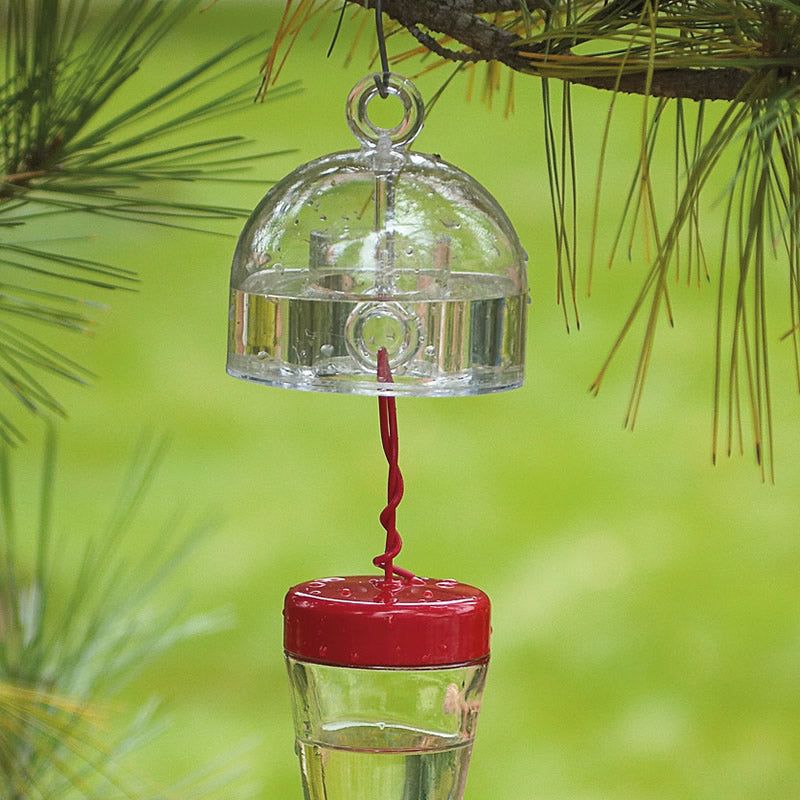
An ant moat is a simple yet effective device that prevents ants from reaching your feeder. By filling this small cup with water, ants traveling down the hook are stopped in their tracks.
This creates a watery barrier they cannot cross. Ant moats are often designed to be visually appealing, adding a decorative element to your garden. Many bird enthusiasts have found them to be a reliable method for keeping ants at bay.
They’re easy to install and require minimal maintenance, making them a popular choice for hummingbird lovers everywhere.
Apply Petroleum Jelly
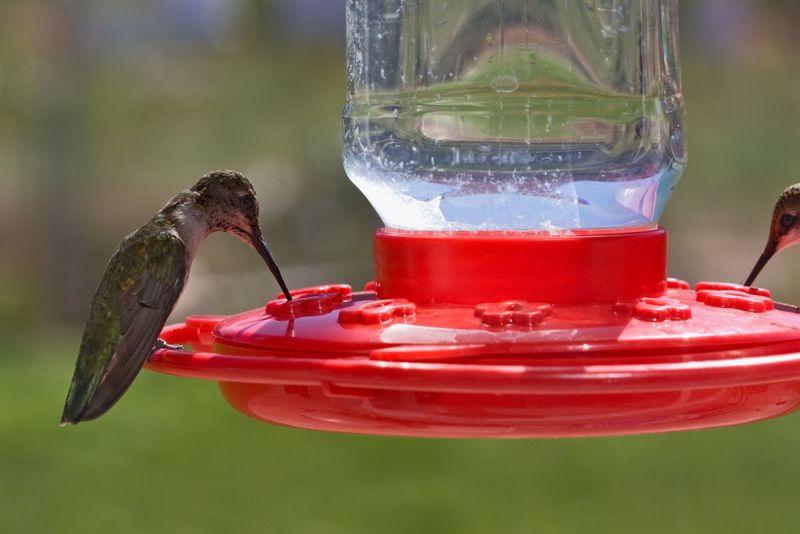
Petroleum jelly can serve as a slippery barrier that ants cannot cross. Apply a small amount to the hanging wire or pole, and watch as ants struggle to get a grip.
This method is both cost-effective and easy to implement. However, it requires regular reapplication, especially after rain. Some users find it less appealing due to its sticky nature, but many swear by its effectiveness.
With a little effort, you can maintain a smooth, ant-free path for your feathered visitors.
Hang Feeders with Fishing Line
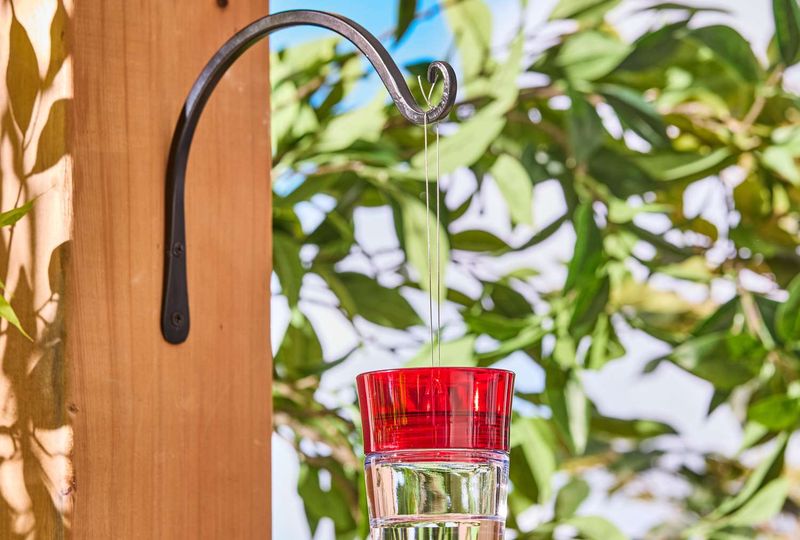
Using fishing line to hang your hummingbird feeder is an ingenious way to thwart ants. Ants find it challenging to navigate the thin, slippery surface of fishing line.
This makes it a practical and unobtrusive solution for many bird enthusiasts. The transparent line blends into the background, allowing the focus to remain on the feeder and its visitors.
Overall, it’s a clever and visually pleasing method to keep ants at bay while inviting hummingbirds to your garden.
Create a Water Barrier
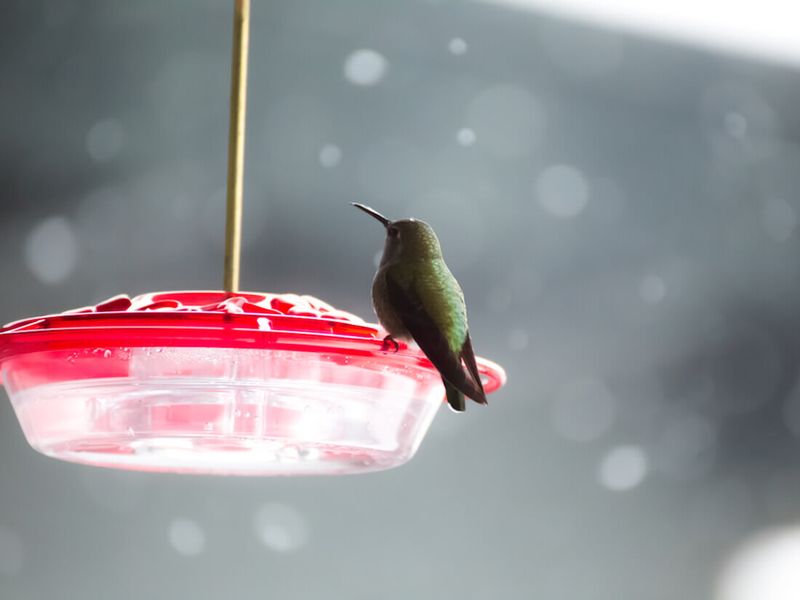
Creating a water barrier underneath the feeder can effectively stop ants in their tracks. By placing a shallow dish filled with water directly under the feeder, ants are unable to reach the nectar above.
This method not only deters ants but can also serve as a drinking station for other garden creatures. It’s an eco-friendly and multifunctional solution that enhances your garden’s allure.
Regular maintenance is needed to keep the water fresh, but the benefits are well worth the effort.
Use Adhesive Tape
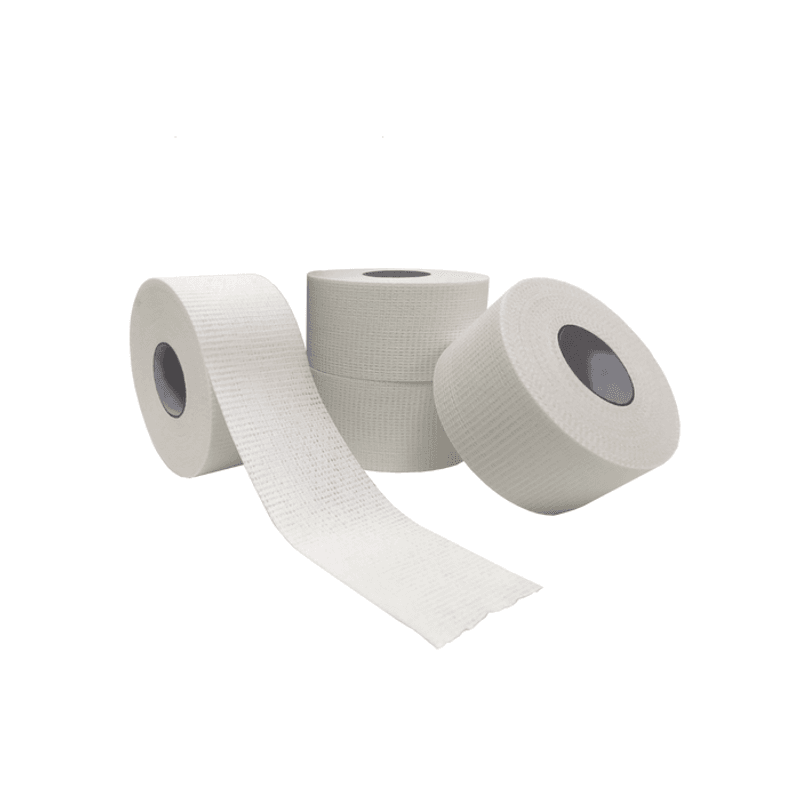
Adhesive tape can provide a sticky solution to your ant problem. By wrapping a strip of sticky tape around the pole or hanging hook, you create a barrier that captures ants.
This method is straightforward but requires regular replacement of the tape. Some find it less visually appealing, yet it’s a practical option for those seeking a quick fix.
The tape can be a temporary measure while you explore more permanent solutions, and it’s a great way to keep ants in check.
Install a Baffle
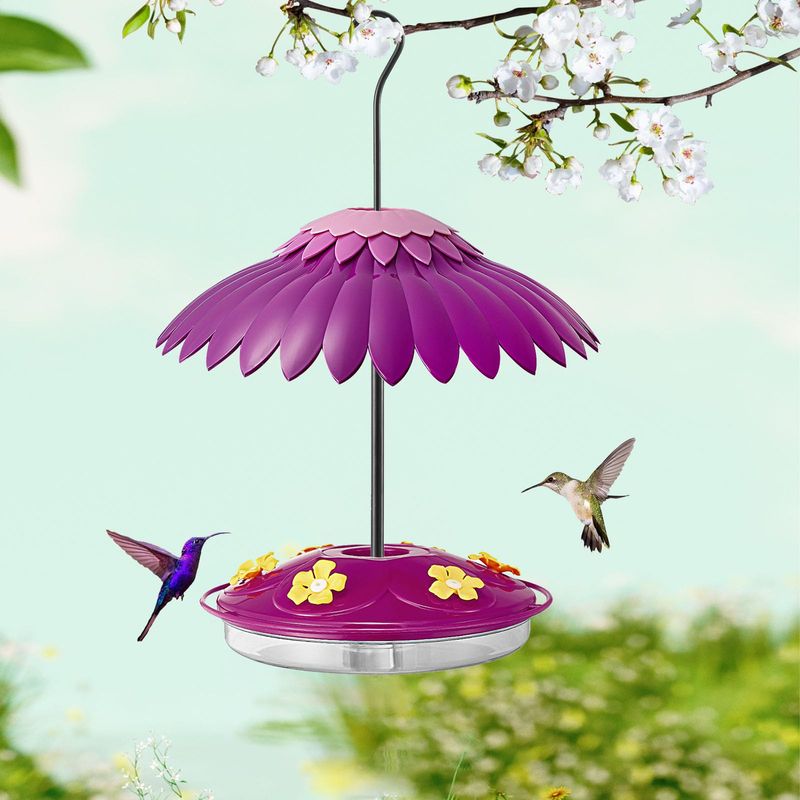
Baffles are typically used in bird feeding but can also deter ants. These dome-shaped barriers are placed above the feeder, blocking ants’ access.
They can be made of metal or plastic and are often adjustable to fit various setups. Baffles add a sleek, modern touch to your garden while providing effective ant prevention.
Installation may vary, but once in place, they require minimal attention. They are a sophisticated solution for those looking to enhance their feeder’s functionality and aesthetics.
Sprinkle Diatomaceous Earth

Diatomaceous earth is a natural powder that can deter ants without harming your garden. Sprinkle it around the base of your feeder, and it acts as a desiccant, drying out and deterring ants.
This eco-friendly method is popular among organic gardeners. It’s safe for birds and plants, making it an excellent choice for environmentally conscious individuals.
Reapplication may be necessary after rain, but its natural effectiveness makes it a worthy effort.
Set Up a Natural Ant Repellent

Natural ant repellents like lemon juice, cinnamon, and mint can keep ants away without harsh chemicals. Placing these items around your feeder creates a scent barrier that ants dislike.
This method not only repels ants but also adds a pleasant fragrance to your garden. It’s ideal for those who prefer natural solutions and enjoy experimenting with different scents.
Regular refreshment is needed to maintain effectiveness, but the aromatic benefits are an added bonus.
Relocate the Feeder
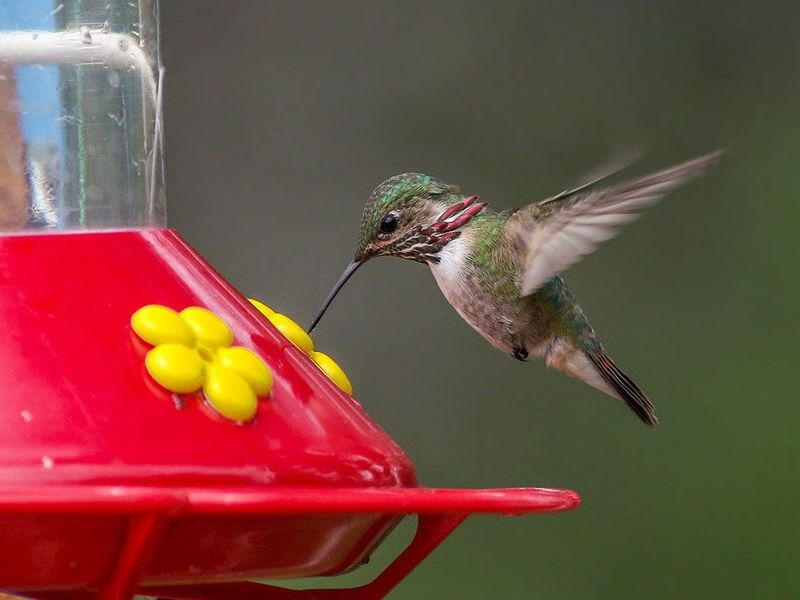
Sometimes, changing the location of your feeder can disrupt ants’ pathways. By moving it to a less accessible spot, you can confuse their trails. This simple adjustment can make a significant difference in ant activity.
It’s a no-cost solution that requires observation and experimentation. Relocation can also refresh your garden’s layout, offering new views and experiences.
Although it might not be a permanent fix, it can be part of a broader strategy to manage ants.
Use Essential Oils
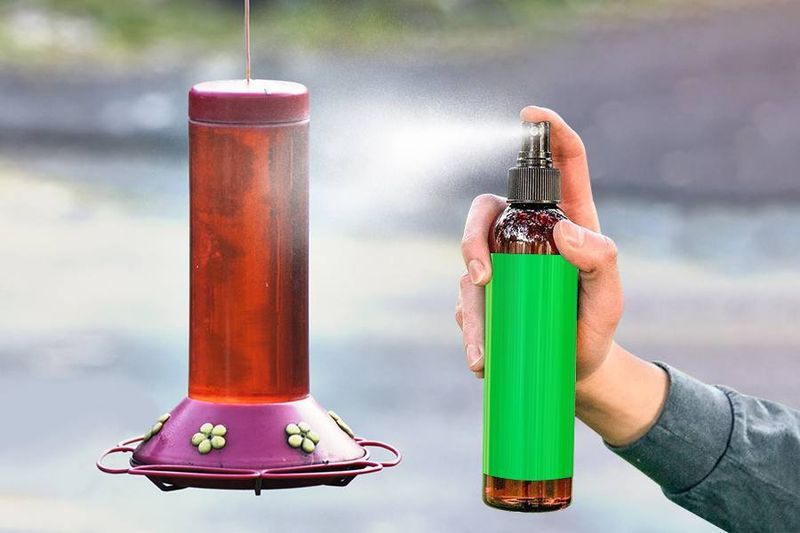
Essential oils like peppermint, tea tree, and eucalyptus can deter ants with their strong scents. Dilute a few drops in water and apply it to the feeder’s hanging mechanism.
This natural method is favored for its pleasant aroma and safety for birds. It’s a versatile solution, as you can customize the scent to suit your preferences.
Regular reapplication is needed for continuous effectiveness, but the fragrant atmosphere created is well worth it. It’s a delightful way to enjoy your garden’s ambiance.
Use a Grease Barrier
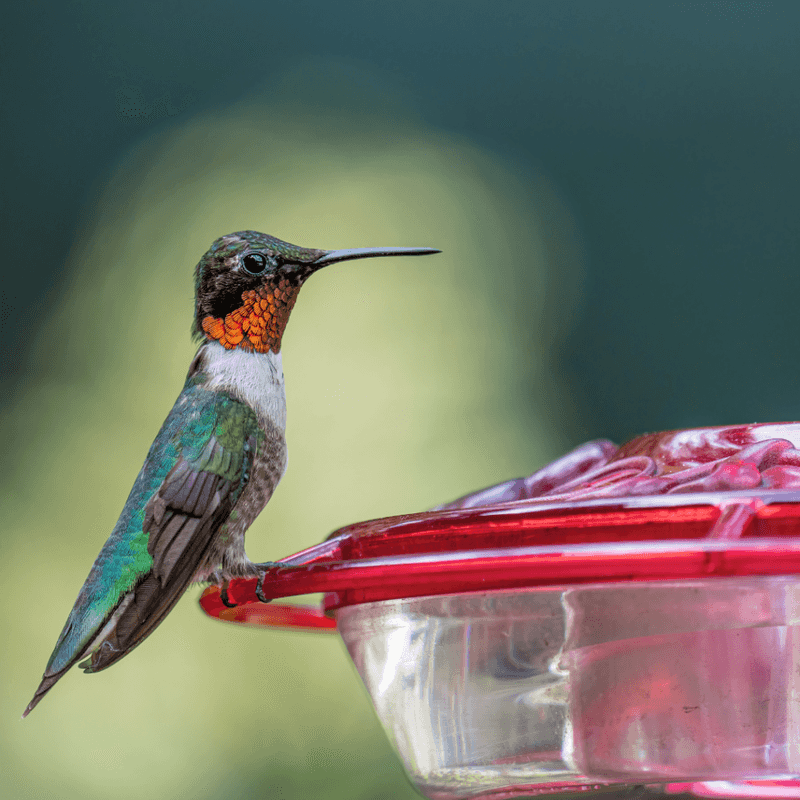
A grease barrier on the feeder’s hook prevents ants from reaching the nectar. By applying a thin layer of grease, you create a slippery surface that’s hard for ants to cross.
Though similar to petroleum jelly, grease is less affected by weather changes. It’s a practical and affordable option, though it might not be the most visually appealing.
Regular maintenance is required to ensure its effectiveness, yet many find it a reliable method to protect their feeders from ants.
Install a Tanglefoot Trap

Tanglefoot traps offer a sticky solution to keep ants at bay. These traps are wrapped around a tree branch or pole near the feeder, capturing ants before they reach the nectar.
They are effective yet require regular monitoring and replacement. This method can be unsightly, but it’s a tried-and-true tactic for many bird lovers.
By catching ants early, you can protect your feeder and enjoy watching the hummingbirds without interruption.
Use a Basin Feeder
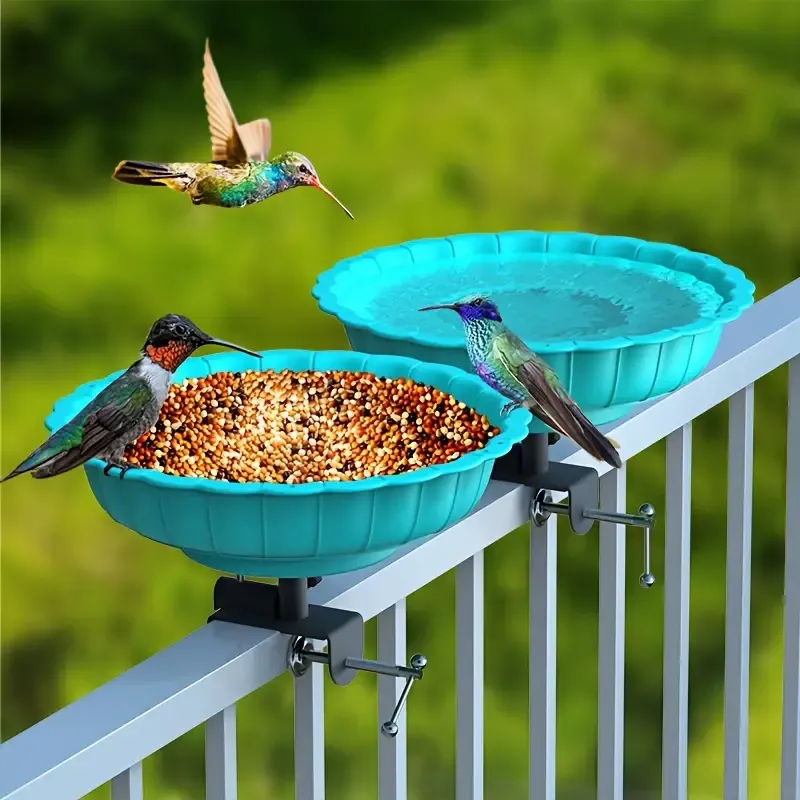
Basin feeders incorporate an ant moat into their design, providing a built-in solution to ant problems. These feeders use gravity to keep nectar accessible to hummingbirds while preventing ants from crossing the water-filled moat.
This all-in-one design is convenient and requires minimal setup. Many find it to be an elegant and efficient way to deter ants.
Choose a basin feeder for a seamless blend of function and beauty, ensuring your garden remains a haven for hummingbirds.
Use Cinnamon as a Deterrent

Who knew? Cinnamon isn’t just for baking; it also serves as a natural ant deterrent. This aromatic spice disrupts the pheromone trails that ants follow, effectively confusing them.
Simply sprinkle ground cinnamon near the base of your feeder to create an ant-free zone.
It’s a gentle, eco-friendly way to keep ants at bay without harming them. Plus, the pleasant aroma adds an extra touch of warmth to your garden space.

